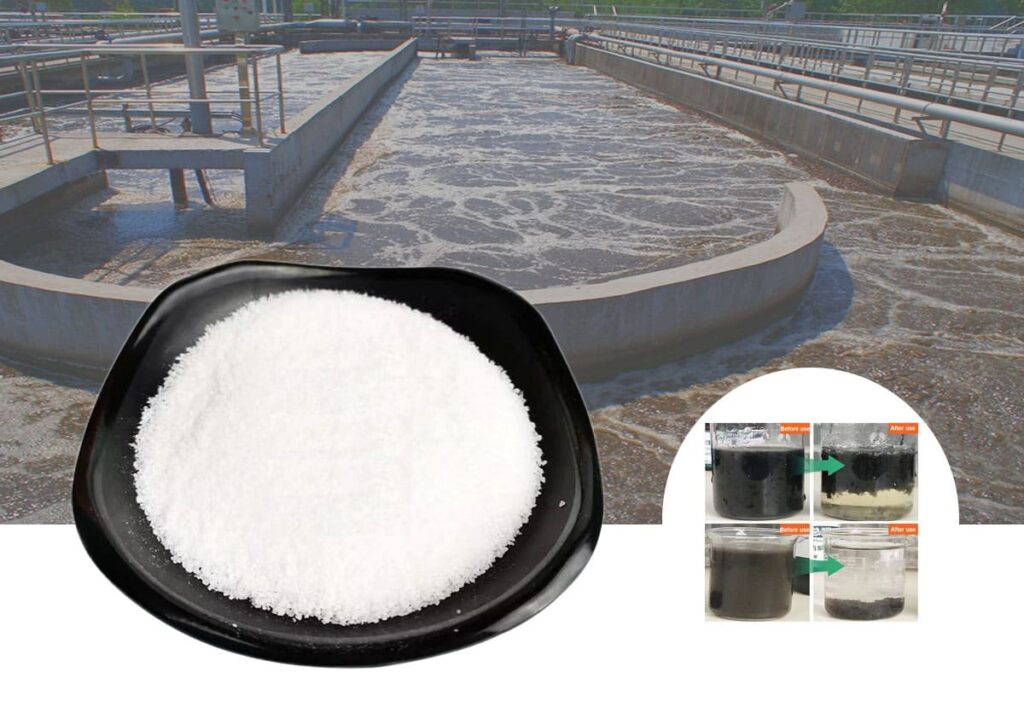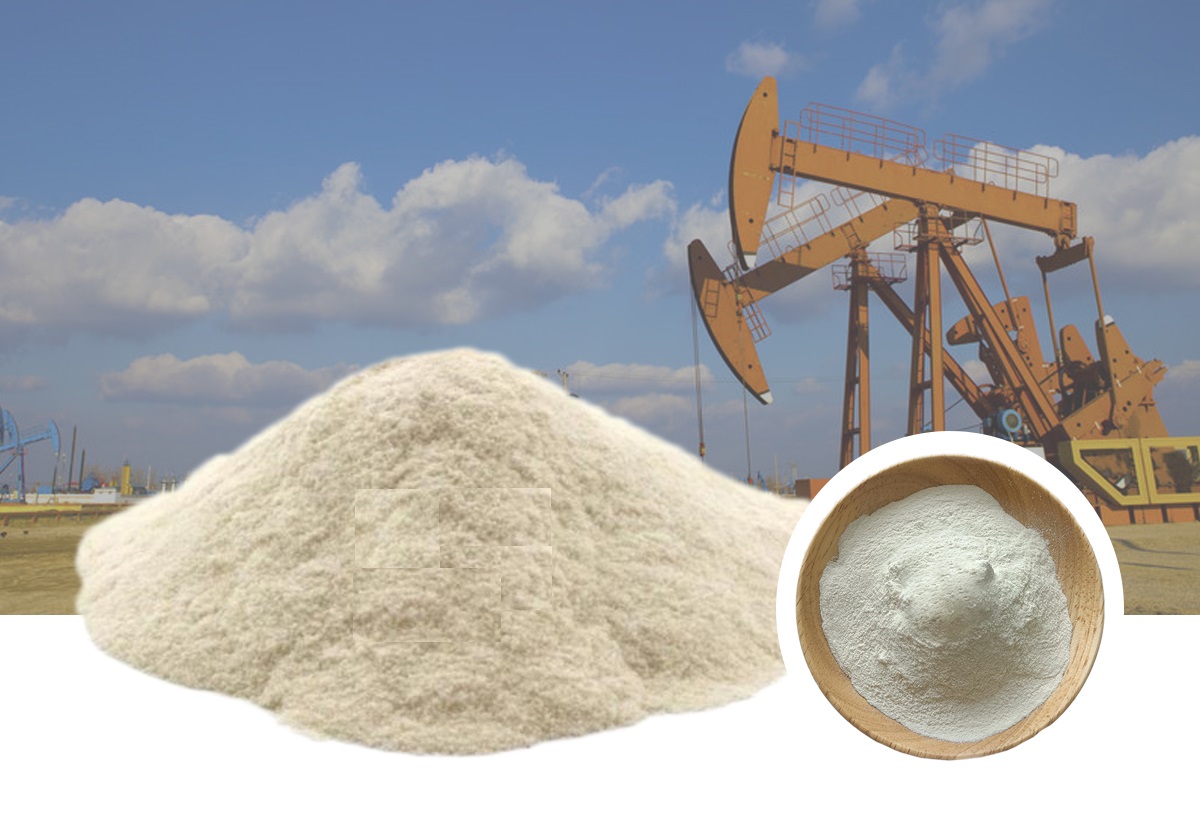Applications of Polyacrylamide PAM in various fields, including water treatment, papermaking, and oil extraction.
Water Treatment Field
Wastewater Treatment: Polyacrylamide can facilitate the formation of larger floccules from suspended particles in wastewater through adsorption and bridging actions, accelerating sedimentation and achieving solid-liquid separation, thereby improving wastewater treatment efficiency. It is particularly effective for wastewater containing a high amount of organic matter and colloidal particles, such as dyeing wastewater and papermaking wastewater.
Drinking Water Treatment: In the purification process of drinking water, polyacrylamide can be used as a coagulant aid in combination with other coagulants to help remove tiny suspended particles and colloidal impurities in the water, enhancing the quality of drinking water and ensuring it meets national drinking water standards.
Industrial Wastewater Treatment: In the treatment of wastewater from industries such as steel, electroplating, and chemicals, polyacrylamide effectively removes pollutants like heavy metal ions, suspended solids, and organic matter, facilitating compliance with discharge standards or reuse of the wastewater.

Papermaking Industry
Retention and Filtration Aid: Polyacrylamide can adsorb onto the surfaces of pulp fibers and fillers, using a bridging effect to aggregate fine fibers and filler particles, enhancing their retention in the paper sheet and reducing material loss. It also improves the water filtration performance of paper, accelerating dewatering during the papermaking process and increasing production efficiency.
Strengthening Agent: Polyacrylamide can form hydrogen bonds with pulp fibers, increasing the bonding force between fibers, thereby enhancing the strength of the paper (such as tensile strength, tear strength, and fold endurance) and improving its physical properties.
Oil Extraction Industry
Oil Displacement Agent: During oil extraction, injecting a polyacrylamide solution into the oil reservoir can increase the viscosity of the injected water, improving the oil-water flow ratio and allowing water to displace crude oil more uniformly, thereby increasing the recovery rate of crude oil. It plays a crucial role in tertiary oil recovery, effectively boosting oil well production.
Drilling Fluid Additive: Polyacrylamide can serve as a thickening agent, fluid-loss reducer, and flocculant in drilling fluids. It increases the viscosity and shear force of the drilling fluid, helping to carry cuttings and prevent wellbore collapse. It also reduces fluid loss, minimizing damage to the oil reservoir, and aids in the flocculation and sedimentation of cuttings, keeping the drilling fluid clean.

Polyacrylamide plays a crucial role in enhanced oil recovery (EOR), particularly in tertiary oil recovery. Here is a detailed introduction to its functions and application:
Principle of Action
- Increasing Injected Water Viscosity: Crude oil in reservoirs often has high viscosity, while water has relatively low viscosity. During water injection for oil recovery, water tends to form a “fingering” phenomenon, where it quickly moves along higher permeability channels, preventing adequate displacement of crude oil. Polyacrylamide has excellent thickening properties; when added to the injected water, it significantly increases the water’s viscosity, allowing for a more uniform advance of the injected water in the reservoir. This expands the volume of water that displaces oil, thereby improving oil recovery rates.
- Improving Oil-Water Flow Ratio: Flowability refers to the ability of a fluid to flow through porous media, which is the ratio of fluid permeability to viscosity. In oil reservoirs, the flowability of crude oil is generally lower than that of water, which can lead to ineffective cycles where water bypasses some crude oil during the displacement process. By increasing the viscosity of water, polyacrylamide reduces its flowability, making the oil-water flow ratio more balanced and enhancing the efficiency of waterflooding, allowing more crude oil to be displaced.
Application Advantages
- Significant Recovery Rate Improvement: Extensive field applications and experimental studies have shown that using polyacrylamide in tertiary oil recovery can increase crude oil recovery rates by approximately 10% to 20%. This has significant implications for increasing oil field output and economic benefits.
- Strong Adaptability: Polyacrylamide can be tailored to optimize its performance in various reservoir conditions by adjusting parameters such as molecular weight and degree of hydrolysis. It can adapt to complex reservoir environments, including those with different permeabilities and crude oil viscosities.
- Relatively Low Cost: Compared to other tertiary oil recovery technologies, such as CO2 injection and polymer microsphere flooding, the cost of polyacrylamide flooding technology is relatively low, offering a high cost-performance ratio. Additionally, ongoing advancements in polyacrylamide production technology present opportunities for further cost reductions.
Application Process
- Injection Method: Typically, either layered injection or blanket injection methods are used. Layered injection involves injecting polyacrylamide solution into different oil layers based on their unique characteristics to achieve uniform displacement across layers. Blanket injection entails injecting the polyacrylamide solution into the entire oil layer section at once, which is suitable for thinner oil layers with minimal inter-layer differences.
- Injection Parameters: These include concentration, injection speed, and volume. The injection concentration usually ranges from 1000 to 3000 mg/L, with specific values adjusted according to factors such as reservoir permeability and crude oil viscosity. The injection speed should be moderate; too fast may cause shear degradation of the polyacrylamide solution in the reservoir, reducing its thickening effect, while too slow could affect oil recovery efficiency. The injection volume is generally determined based on the geological reserves of the reservoir and the expected increase in recovery rates, typically set at 0.1 to 0.5 times the pore volume of the reservoir.
Other Fields
Soil Improvement Agent: Polyacrylamide can be used to improve soil structure, increasing its water retention and permeability. It forms a protective film on the surface of soil particles, preventing dispersion and loss, enhancing the soil’s erosion resistance, and promoting microbial activity in the soil, which benefits plant growth.
Mineral Processing Industry: In mineral processing, polyacrylamide can be used as a flocculant for the concentration, filtration, and treatment of tailings. It helps mineral particles in the slurry to flocculate and settle quickly, achieving separation of valuable minerals from gangue, thereby improving the efficiency and recovery rate of mineral processing.

 By Coco Ho
By Coco Ho



